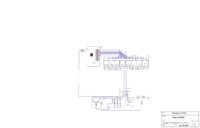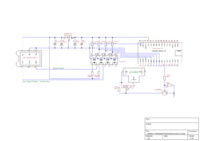I've mocked up my arduino-powered flasher/canceller on a breadboard. Just waiting on a few parts to arrive before testing the functions.
I saw that on another thread. That looks great. I did not invest in a breadboard, mainly because once the programming is finished, wouldn't have much use for it, but it would make things easier.

I sqeeled like a giddy schoolgirl last night when my my bluetooth dongle and my 8-relay GPIO board came in. I hooked up the relays and found a few minor issues. It turns out that some of the GPIO ports are HIGH and some are LOW so some of the relays came on instantly and one of them was having some power issues. Next I told python to set all the GPIO to LOW and they all turned on (which I though was backwards)

. Set them to HIGH and they all shut off. played with them for a while and all the relays seem to work just fine. This issue will resolve when I add the program to the boot sequence later. I followed this youtube video to set up the relays:
. The comment section has a link to example code to get the relays working.
Here is the relay board I am using:
http://www.amazon.com/gp/product/B00R77PN1A/ref=oh_aui_detailpage_o00_s01?ie=UTF8&psc=1
It is rated to 30V 10A so that should run most everything except the main ignition wire which will be powered through a universal car relay powered by the relay board (I'm using a relay to power a relay.lol)
Had trouble pairing my bluetoooth. I installed Bluez and Blueman and the GUI ran after install. However, after reboot I can't get the GUI to come up again. My phone sees my pi but the pin doesn't work. I think the pi needs to be able to see phone as well for this to work. I was hoping to find a Class 3 dongle (1 meter range) but those are apparently non existent so I got a class 2 (30 meter) but apparently BT can estimate distance from the device so with a little extra programming, I can set it to throw the relay when the phone gets within a certain distance as opposed to just when the phone pairs to it.
Now that I have the B+ model, I think I am going to add a touch screen monitor, and use it as a speedometer, tachometer, and navigation with a GPS Dongle. I'm still not sure whether a hall sensor or a reed switch is the better option. It will probably come down to price. I'm open to suggestions on that one.
Since I am using the B+ now instead of the A+, I will also eventually spend some BIG $$$ and get the largest amp-hour lithium battery I can find at some point but not until I get a feel of just how much power drain I'm going to get from the pi.





 :banghead
:banghead
